People of the sun. Part 2 Maya - culture and war. Chichen Itza and Bonampak (Mexico)/太阳的人。第2部分玛雅 - 文化和战争。奇琴伊察和波南帕克(墨西哥)
The term "Mesoamerica" was introduced into scientific use not so long ago - in 1943, the German anthropologist Paul Kirchhoff, and it means - "Middle America." Archaeologists have determined that human presence in the area dates back to Mesoamerica 21,000 BC - 11,000 BC Culture of evolved quickly. On the whole territory of Mesoamerica began to build cities with palaces, arenas for shows, ball games, a huge ceremonial religious centers./术语“中美洲”被引入科学利用不久前 - 在1943年,德国人类学家保罗·基尔霍夫,这意味着 - “美国中部” 考古学家已经确定,在该地区人类的存在可追溯到中美洲21000 BC - 11,000 BC 文化发展迅速。在中美洲全境开始建立与宫殿,阿里纳斯表演,球类,一个巨大的礼仪宗教中心城市。
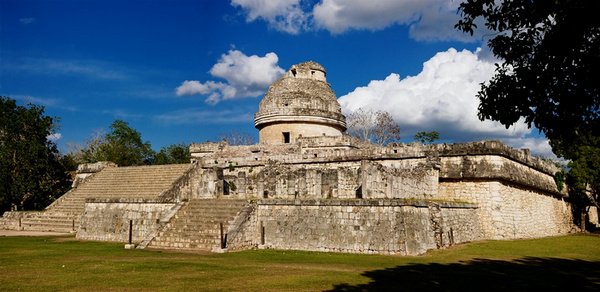
The city of Chichen Itza in the Yucatan is one of the most interesting monuments. This is an astronomical observatory, overlooking the entire surface of the sky.
Ed Barnett - archaeologist, on the Mayan civilization expert studied this amazing moment that reveals extraordinary insight during the time of the Maya:/奇琴伊察在尤卡坦的城市是最有趣的古迹之一。这是一个天文观测台,眺望天空的整个表面。埃德巴尼特 - 考古学家,对玛雅文明的专家研究了这个神奇的时刻,揭示在玛雅人的时间非凡的洞察力:
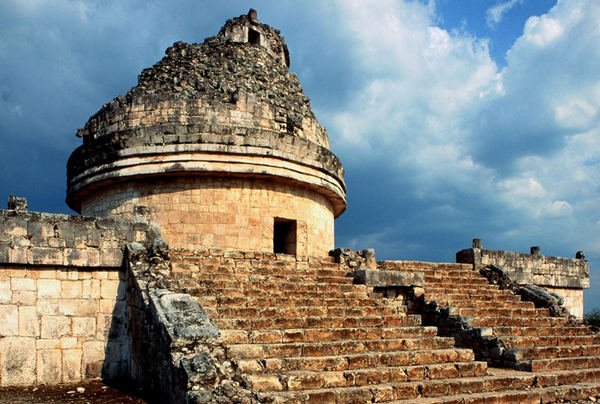
There remain holes, which were used as follows: it was necessary to look to the inner corner of the window on the outside corner. Along this line, just could see the sun. Stepping aside, we move to 27 degrees, and we can see the place where Venus rises, the most northern point of the horizon.
Mayan priests tirelessly studied the heavens, trying to find a solution of human lives to the stars, as well as to predict the dates of wars and coronations.This is not just a system of observations of the stars, - says archaeologist Dominique Michelet, - Its purpose - to study current events and past events. With this it was possible to deduce certain regularities and predict the future. They also like the other peoples of Central America to understand the cyclical time. They saw the repetition of certain cycles, speculated on the possibility that the time will be interrupted once, so they needed a clear understanding of the events and their study. Such knowledge could tell them about the possible future./- 有保持孔,其中使用如下:它是必要寻找到在外侧角窗的内拐角。沿着这条线,就可以看到太阳。让位,我们转移到27度,我们可以看到金星升起,天边的最北端的地方。玛雅祭司们孜孜不倦地研究着天空,试图寻找生命的星辰的解决方案,以及预测战争和加冕的日期。 - 这不只是一个明星的观测系统, - 其目的 - - 研究当前事件和过去的事件考古学家多米尼克·米什莱说。与此有可能推断出一定的规律性和预测未来。他们也喜欢中美洲其他国家的人民,了解循环时间。他们看到某些周期的重复,推测在该时间将中断一次的可能性,因此,他们需要的事件和他们的研究有清晰的认识。这种知识可以告诉他们关于未来可能的。
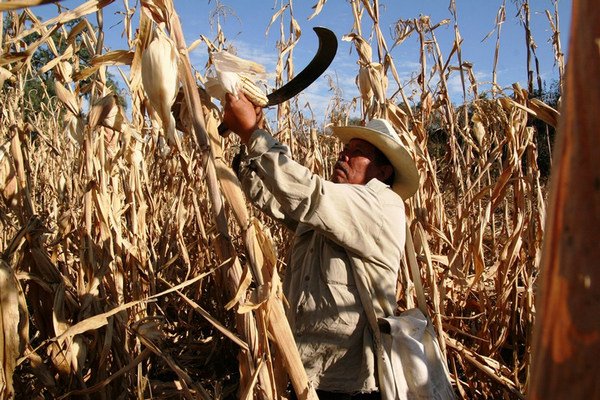
In the event of the universe are subject to cycles. The cycle is supported by the good and evil forces, favorable and unfavorable dates. This is - a vast science of time cycles and has a practical use for farmers. Astronomers could say to put them, when to harvest and how to carry out the work. Everything in this society depended on the time cycles. The descendants of the Maya still use slash-and-burn agriculture. During the dry season they arrange fires, clearing the area suitable for agriculture in the jungle, and the ashes used to fertilize the soil./在宇宙的事件受到周期。周期由善恶势力,有利和不利的日期支持。这是 - 时间周期的一个巨大的科学和有农民实际使用。天文学家可以说把他们,什么时候收割,如何开展工作。在这个社会一切都取决于该时间周期。玛雅人的后代仍然采用刀耕火种农业。在旱季,他们安排大火,清除该地区适合在丛林农业,用骨灰培肥土壤。
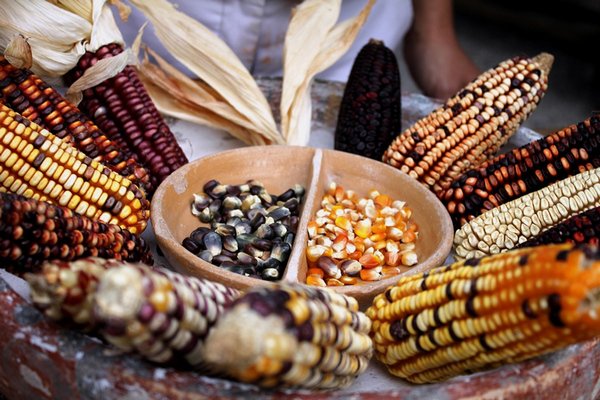
For many thousands of years, corn was the staple food for the population of South America. She began to cultivate here about 5000 years ago. The first corn gave only a few cobs, which could hardly find ten grains./对于许多千百年来,玉米是南美洲人口的主食。她开始约5000年前,在这里培养。第一个玉米只给了几棒子,这很难了解到十种粒。
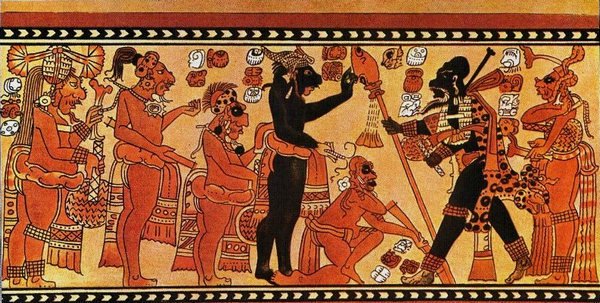
Selecting and growing the best corn, local people were able to bring the corn, which we know now. Maya peoples called themselves the children of the corn. Their legends tell that the gods created the first man from corn. Today these people live in the same place where once lived their 70 thousand ancestors./选择和成长最好的玉米,当地人民能够带来的玉米,我们现在知道了。玛雅人自称玉米的孩子。他们的传说告诉众神玉米创建的第一个男人。今天,这些人生活在曾经居住过的70000祖先相同的地方。
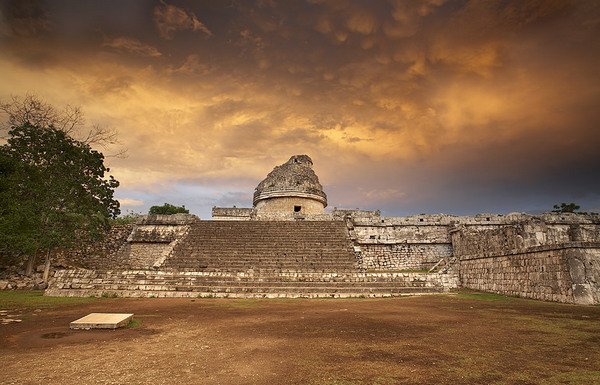
It is surprising how the ancient Maya could survive such a large community, if environmental conditions can provide accommodation only a small group of people! Slash-and-burn agriculture also was fraught with many dangers. The soil is quickly exhausted if it is not cultivated. Maya invented a variety of agricultural technologies that allow them to get a lot more crops than they are today. But that still was not enough. In the 8th century Maya city is rapidly growing. With a growing population increasingly difficult to provide people with food. This has led people to starve the Maya.
At the same time the Maya city are faced with another problem, this time - the organizational. The unity of their civilizations remained only culturally, but politically. 70 cities, each of which had its own ruler, were in constant rivalry. Tikal (Guatemala) and Calakmul (Mexico) were a constant struggle for supremacy.
local self-government system was developed and achieved brilliant results. But in some sense it was too fragile.The weakness was manifested in the external vulnerability and constant infighting and rivalry. Sure, sometimes whole cities disappeared, simply because of the Maya peoples destroyed each other, - says archaeologist Dominique Michelet - Huge danger was due to the fact that they were vulnerable to external enemies. When Europeans invaded their land, civilization was not possible to withdraw and save their core values./令人惊讶的是古代玛雅如何生存这样一个庞大的社区,如果环境条件下能提供的住宿只有一小群人!刀耕火种农业也充满着许多危险。如果它不耕地的土壤被快速耗尽。玛雅人发明了各种各样的农业技术,使他们能得到更多的作物比现在的。但仍然是不够的。在8世纪玛雅城市正在迅速增长。随着人口增长越来越难以提供食物的人。这导致人们挨饿玛雅。同时玛雅城市面临的另一个问题,这时间 - 的组织。他们的文明的统一性只剩文化,但政治。70个大中城市,每一个都有自己的统治者,都在不断的竞争。蒂卡尔(危地马拉)和卡拉克穆尔(墨西哥)是为霸权不断进行斗争。地方自治系统的开发,并取得了辉煌的成绩。但是,在某种意义上它太脆弱。 - 的弱点表现在外部脆弱性和不断的内讧和争夺。当然,有时整座城市消失了,因为仅仅是在玛雅人相互毁灭, - 考古学家多米尼克米什莱说 - 巨大的危险是由于他们容易受到外部敌人的事实。当欧洲人入侵他们的土地,文明是不可能退出并保存自己的核心价值观。
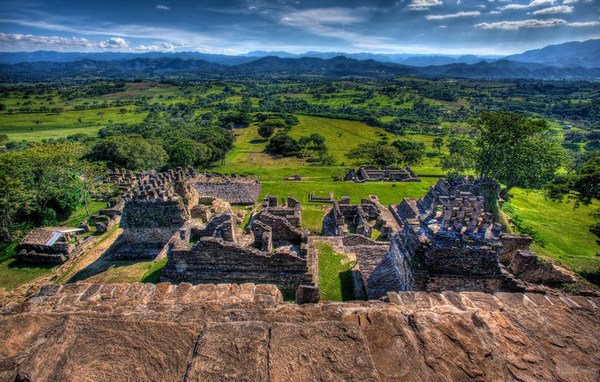
At an early stage of the study, scientists naively believed that the peoples of the Maya were peaceful and friendly. Now they know that it is not so! On the contrary, the Mayan peoples constantly fought.
In 1946, among the ruins of Bonampak in the territory of Chiapas (Mexico's territory on the border with Guatemala) was found the most magnificent frescoes of the Maya./在研究的早期阶段,科学家们天真地认为,玛雅人的人民是和平友好的。现在,他们知道这是不是这样!相反,玛雅人民不断奋斗。1946年,波南帕克在恰帕斯(墨西哥对危地马拉边境地区)境内的废墟中发现了玛雅的最壮观的壁画。

The fresco depicts the leader Chiang Muvaan that Bonampak rules in the late 8th century. These drawings depict hostility of local people, which split the territory of the Maya into many warring states./壁画描绘了波南帕克在8世纪末规则的领导者蒋Muvaan。这些附图当地人介绍,这分裂了玛雅人的领土成许多战国的敌意。
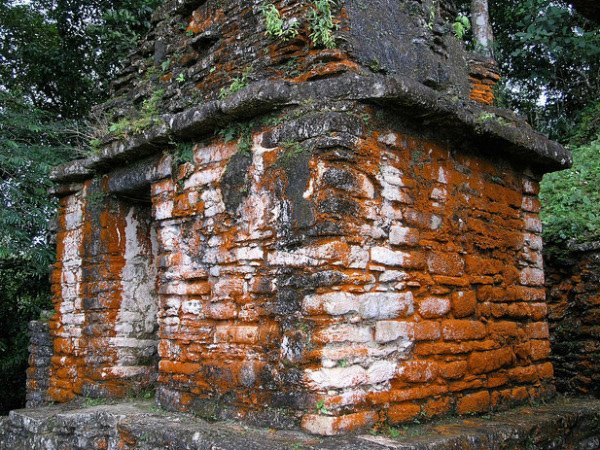
Each one of them sought to expand its zone of influence, to strengthen political power and improve well-being. In the context of ever-dwindling resources, this fratricidal war only contributed to their mass destruction.
After the 9th century, is no longer installed stelae and monuments were built. Numerous excavations have found traces of numerous conflicts and wars. In just a few the world was destroyed and gone down in history./他们每个人都寻求扩大其影响区,加强政治权力和改善福利。在不断减少的资源的背景下,这种相互残杀的战争才促成他们的杀伤力。9世纪后,不再安装石碑和纪念碑建成。众多的发掘发现了许多冲突和战争的痕迹。在短短的几年世界被破坏,载入了史册。
Source: Les Peuples du Soleil. Mayas, Aztecas, Incas, 2007. Gedeon Programmes, France 5, NHK
Photo: Jacob Rus, Magnus Manske, Patrick Smit, as well as from the Internet./来源:莱斯Peuples剧团。玛雅人,Azteques,印加人,2007年热代翁方案,法国5,NHK照片:雅各布罗斯,马格努斯Manske,帕特里克·施密特,以及从互联网上。
The first part of the look here:/这里看的第一部分:https://steemit.com/travel/@zzzzzzzzz/people-of-the-sun-part-1-maya-tikal-guatemala-1
Terrible translation.